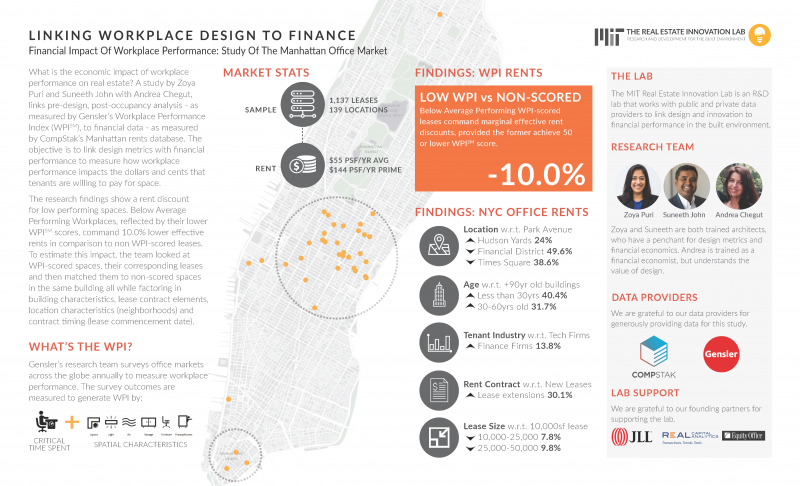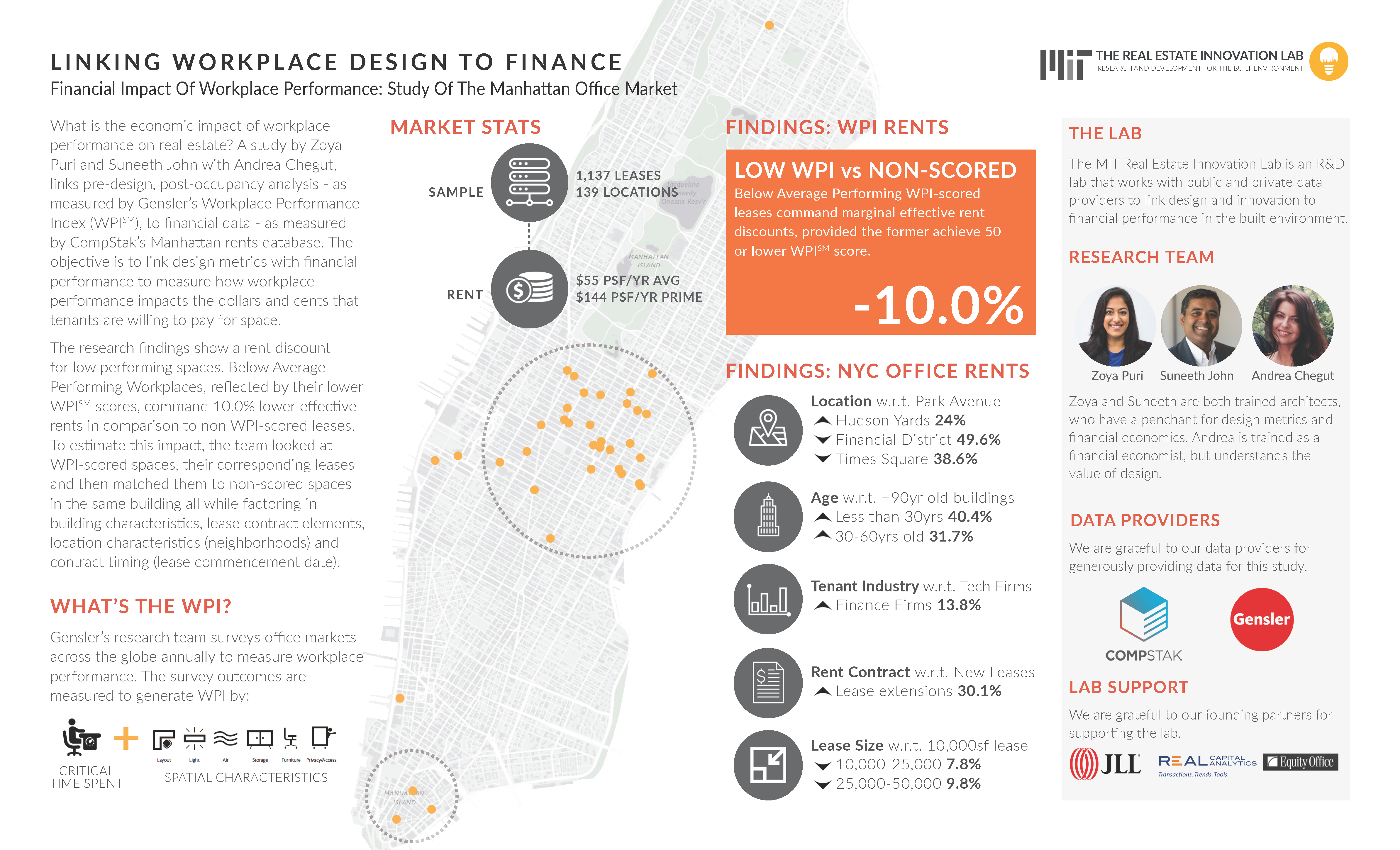Limited work has been done on exploring the correlations between financial performance and design that impacts the workplace environment. This study’s main objective is to explore the correlation between workplace design that support higher workplace performance and its financial value. i.e., if workplaces are designed to a high employee performance measure like Gensler’s Workplace Index (WPISM), do they result in higher financial outcomes as exhibited by higher effective rental rates? In this way, our study aims to document the impact of occupancy experiences and workplace design with the financial performance of buildings as measured by effective rents. Our objective is not to learn the drivers of workplace design that correlate with value, but rather to understand whether there is a financial incentive to invest in productive, healthy and engaging spaces.
To identify correlations between design and financial performance in real estate, we link Gensler’s Workplace Performance Index (WPISM) scores on individual spaces to CompStak’s database of Manhattan effective rents over the 2005 to 2015 period. Importantly, we identify spaces that have been “treated” or scored through the Workplace Performance Survey. For NYC, we have 139 buildings that have spaces within them that have a WPISM score and effective rent contracts. In total, this leads to 1,137 leases, of those leases 70 have WPISM scores broken down across quantiles – above average, average and below average and the remaining same building effective rent contracts are used as the control sample. This data is then used in a quasi-natural experiment regression model, where the within building treatment and control identification strategy is meant to tease out any building or neighborhood fixed effects that impact the whole of the building. In turn, remaining variation in effective rents per square foot could be explained by variation in tenant quality, contract features or work performance design our variable of interest.
Results of this analysis suggest that spaces that have below average WPI scores, earn effective rents that are 10 percent or $5.50 psf less than a comparable rented space within the same building’s control group. This signals that spaces that are not competitively designed for workplace performance receive a discount as measured by effective rents in the marketplace. Future research should seek a larger sample size for further robustness checks.

